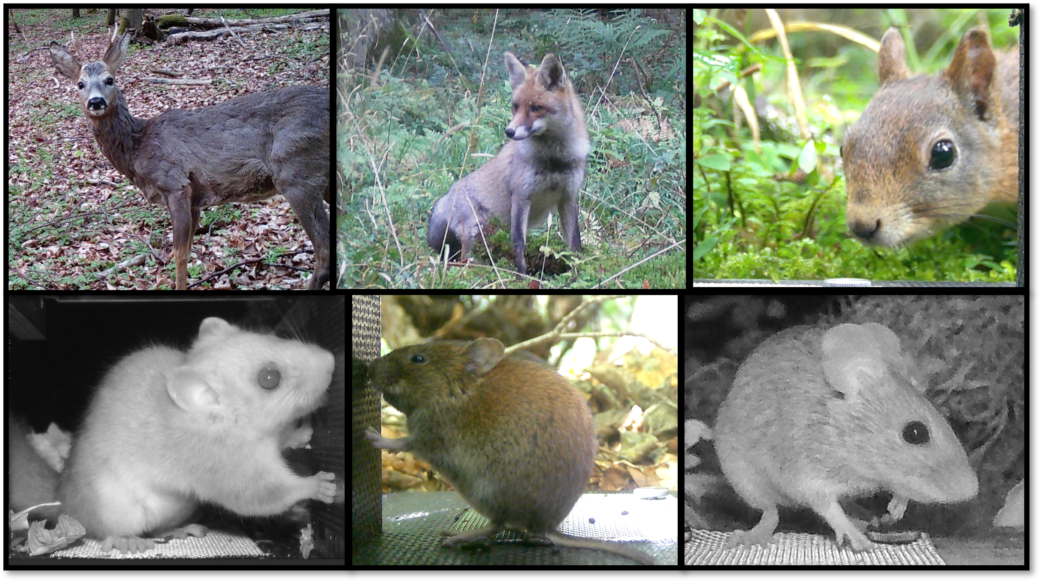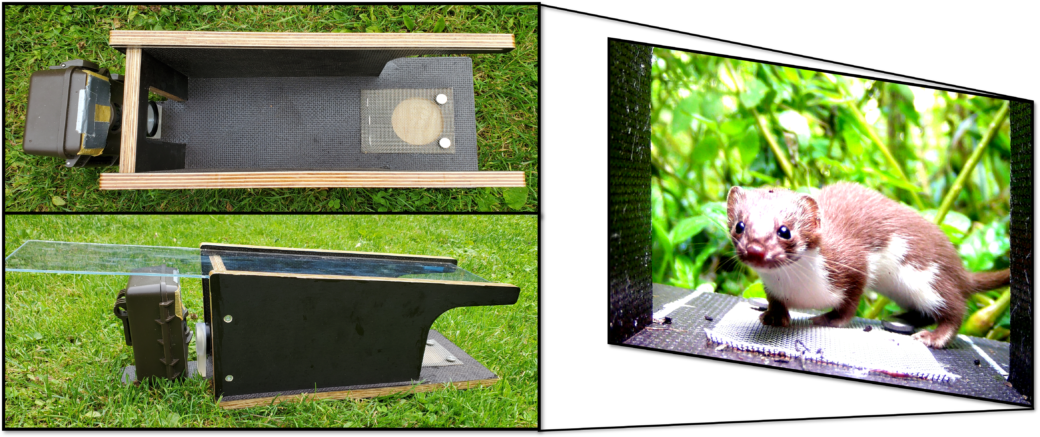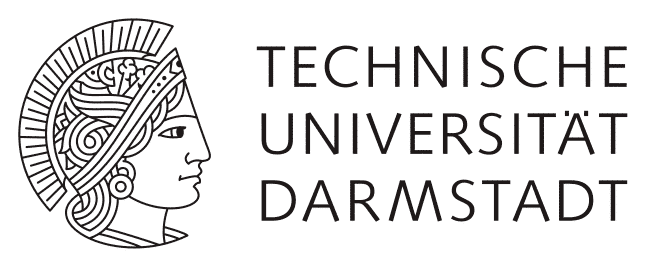Mammals

As a result of the drastic global decline in biodiversity, a third of all mammal species are already considered endangered. Despite the urgent need to curb this loss, significant knowledge gaps remain regarding the determinants of biodiversity and the precise mechanisms driving its decline.
Over recent decades, the increasing intensity of forest management has been a major driver of global biodiversity loss. In Germany, previously common species such as the pine marten and European hare are now considered threatened. Conversely, certain more resilient species—typically habitat generalists such as roe deer, foxes, and wild boars—or species characterized by high population densities and small ranges, such as voles, appear to thrive in intensively managed landscapes. Species decline is therefore often accompanied by a shift in abundance.
Mammal communities play critical roles across the entire trophic spectrum, including ecosystem functions such as seed dispersal and predation. Additionally, the composition of mammal communities is pivotal for the dynamics of vector-borne pathogens, such as Borrelia species. Studies from North America have demonstrated the so-called dilution effect, illustrating a close link between biodiversity and the prevalence of pathogenic Borrelia species in ticks, which can indirectly influence human health.
While numerous studies have examined specific aspects, comprehensive analyses of the factors related to forest structure and management that influence the diversity of ground-dwelling mammals in Germany remain scarce. This project aims to address this research gap.
The aim of Mammals is to determine the abundance and diversity of large and small mammals in relation to forest management and landscape factors. Subsequently, their influence, including a possible “dilution effect” on the density and Borrelia prevalence of ticks of the species Ixodes ricinus, as recorded in the LaBiRo and DIVERSITIX projects, is investigated. In addition, on the FOX plots, the influence of canopy opening and deadwood enrichment on the abundance, diversity and circadian activity of mammals is investigated.
The surveys are conducted on the 25 forest MIPs of the Schwäbische Alb Exploratory and the 9 VIPs of the Schorfheide-Chorin Exploratory to complement data collection from the Hainich-Dün Exploratory.
- The diversity of large mammals increases with greater structural complexity and permeability of the surrounding landscape.
- Lower forest management intensity, as measured by the plot-specific Silvicultural Management Index, enhances the diversity of small mammals.
- Canopy openings and deadwood enrichment promote mammalian diversity and induce shifts in circadian activity patterns. For instance, small mammals may avoid open gaps during the day due to increased predation pressure from aerial predators.
- Consistent with the dilution effect hypothesis, higher mammalian diversity reduces the prevalence of Borrelia in ticks.
- Large mammal monitoring using conventional wildlife camera traps
- Small mammal monitoring using customized bated small mammal camera traps










